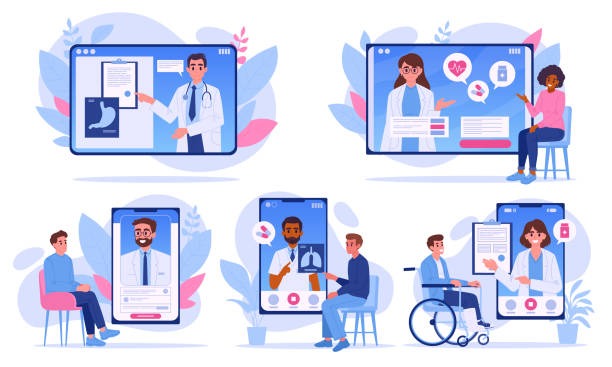Key Takeaways:
- Video visits are revolutionizing healthcare by enhancing accessibility and convenience.
- Understanding video consultation benefits and challenges can optimize patient experiences.
- Adhering to best practices ensures productive and secure remote medical appointments.
The Benefits of Video Visits
The healthcare industry is not an exception to the revolutionary developments of the digital age. Among these changes, the introduction of video visits stands out as a revolutionary step toward enhanced patient care. With a telehealth appointment, patients can consult with healthcare providers virtually anywhere, eliminating the time and costs of traveling to a healthcare facility. This is particularly beneficial for people who reside in rural areas, where access to healthcare is often limited due to the lack of close medical facilities. Furthermore, video visits present a safer alternative during widespread health crises, such as pandemics, minimizing the risk of virus transmission by limiting direct contact. Patient satisfaction has significantly increased due to the flexibility and convenience of these virtual sessions. Studies reveal that more patients are willing to integrate telehealth services as part of their regular healthcare routines, thus paving the way for a more accessible healthcare future.
Navigating Technical Requirements
For a smooth video visit experience, both patients and providers need to meet essential technical requirements. A reliable and fast internet connection forms the backbone of an effective telehealth interaction, ensuring video and audio communication quality and consistency. A successful virtual consultation requires devices with working cameras and microphones, such as computers, tablets, or smartphones. To prevent technical issues, patients should conduct a pre-appointment check of their equipment, ensuring compatibility with the telehealth platform. Consumer Reports offers helpful guidelines to prepare devices and troubleshoot common issues, emphasizing the importance of test calls to assure audio and video quality. Additionally, using updated software boosts compatibility with specific telehealth platforms, thus enhancing the overall experience by reducing potential disruptions during interactions, allowing both parties to focus more on healthcare-related discussions rather than technical glitches.
Ensuring Privacy and Security
Addressing privacy and security concerns becomes paramount in telehealth as technology advances. Under laws like the US Health Insurance Portability and Accountability Act (HIPAA), patients demand high levels of privacy when they give sensitive information to healthcare professionals. Strict privacy laws must be adhered to by these healthcare professionals to protect patient data confidentiality and integrity during video consultations. Many telehealth platforms employ advanced encryption techniques to protect data transmission, ensuring that video and audio streams remain confidential and secure against unauthorized access. Patients are encouraged to proactively verify their telehealth platform’s compliance with privacy standards, maintaining peace of mind during each digital interaction. By prioritizing privacy and security, telehealth can maintain patient trust, which is fundamental to successfully integrating video visits into standard healthcare practices.
Preparing for a Productive Video Visit
Achieving the best outcomes from a video visit extends beyond merely connecting to the platform. Proper preparation plays a pivotal role in maximizing the effectiveness of remote medical consultations. Here are several key steps to help ensure a productive session:
- Find a quiet, well-lit space: Selecting an area with minimal distractions lets you focus entirely on the conversation with your healthcare provider. Adequate lighting improves visual clarity, enabling better assessment and interaction during the video call.
- Make a list of questions or concerns: Organizing your thoughts and medical queries beforehand ensures comprehensive coverage of pertinent topics during the video visit. Remaining open to addressing additional concerns as they emerge is also essential for a thorough consultation.
- Have medical records ready: Assembling any relevant medical documents, histories, and current medications in advance greatly enhances the quality of information your healthcare provider receives, aiding them in making informed decisions and recommendations during the assessment.
These preparatory measures can lead to more comprehensive and practical consultations, ensuring that both patient and provider make the most of the time spent during the video visit.
Overcoming Common Challenges
While video visits offer substantial benefits, several challenges require proactive measures for resolution. Technical difficulties, from connectivity issues to software incompatibility, frequently disrupt consultations, impacting patient and provider experiences. To alleviate these challenges, healthcare providers can supply clear instructions and conduct test runs to help familiarize patients with the platform. Furthermore, the lack of physical examinations limits the remote assessment of certain medical conditions. To bridge this gap, introducing digital peripherals such as blood pressure monitors and pulse oximeters enables the accurate collection of vital physiological data from patients. Mayo Clinic experts recommend these tools to enhance video consultations, allowing providers to gather comprehensive health information remotely, ultimately ensuring better patient evaluations and outcomes.
Feedback and Continual Improvement
Feedback is instrumental in the continual improvement and refinement of telehealth services. By sharing experiences and insights, patients can highlight common challenges, successful aspects, and areas for improvement, driving enhancements in telehealth offerings. In addition to influencing how telehealth platforms will be developed, this discussion will help customize services to better suit patients’ changing demands. For healthcare providers, leveraging patient feedback allows for identifying and resolving potential issues, such as user interface design, communication clarity, and service delivery effectiveness. By fostering open communication between patients and providers, telehealth can evolve into a more efficient and effective healthcare solution that meets a broader patient population’s diverse needs and expectations.
The Future of Video Visits in Healthcare
The future of healthcare lies in integrating technological innovations like video visits, creating opportunities for a more holistic and accessible healthcare approach. As digital technology advances, video consultations are poised to complement traditional in-person visits, resulting in a more comprehensive care delivery model that accommodates patient needs more effectively. Embracing telehealth empowers patients with greater control over their healthcare journey, providing unprecedented access to personalized medical care without geographic limitations. As more healthcare providers adopt telehealth models, video visits will likely become a cornerstone of modern medical practice, bridging the gap between location barriers and optimal healthcare delivery, ultimately driving improved health outcomes and greater patient satisfaction across the healthcare continuum.



